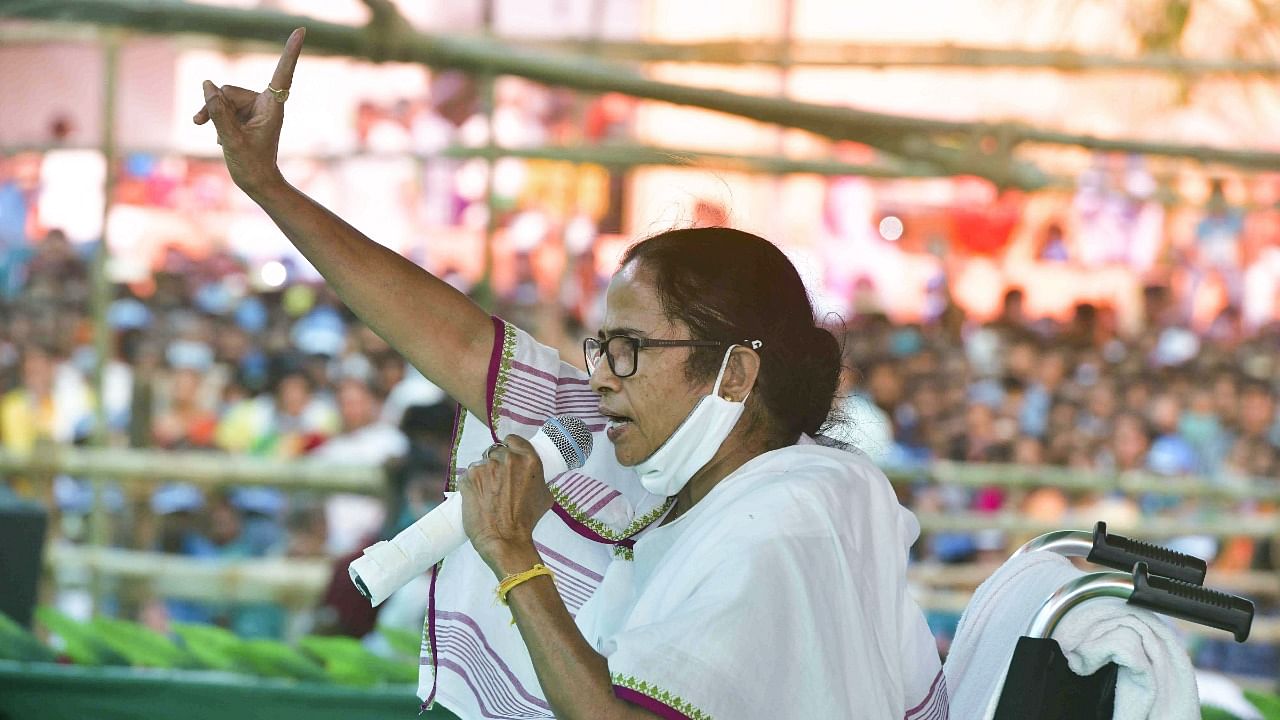
West Bengal stands out as a state which provided a unique, but misspent, opportunity to a single Left-led coalition for more than three decades (1977-2011). The Left’s eventual decimation and the marginal presence of the Congren the state left the Trinamool Congress (since 2011) a huge political space in which to write its political script. However, the TMC is not identified with any clear ideology or policy position. While its state politics is anti-Left and anti-Congress, at the national level, a strong and consistent critique of the BJP has inclined the TMC towards the ambivalent political space of the so-called Third Front.
Populist in character, the Trinamool Congress government spends a higher percentage of its budget on social welfare than any state other than Kerala. As such, there has occurred some pulling up out of poverty of underprivileged sections in West Bengal. At the same time, the TMC has continued with the state’s tradition of patronising local party-linked mafia. It is the latter who have hugely benefited from and controlled the dispersion of welfare and resources. This macabre tradition is not the contribution of any single political party, much less that of the TMC. From the 1960s, with industrial stagnation and unemployment, large numbers of disaffected youth were mobilised by political parties in power to represent their local muscle in return for limited largesse. The decade of TMC rule has thus been a mixed bag, developmentally.
Chief Minister Mamata Banerjee provides the interesting edge to the state’s otherwise humdrum politics. Top Indian women politicians have invariably risen with male props. Politicians like Indira Gandhi, Sonia Gandhi, Vasundhara Raje have used their privileged family connections. Others have leaned on powerful male mentors, as Mayawati on Kanshi Ram, Jayalalitha on MGR. Even second-order politicians, who have not quite made it yet to the top, are connected to male patronage, such as Supriya Sule, the daughter of Sharad Pawar, or Dimple Yadav, the wife of Akhilesh Yadav, to say nothing of Rabri Devi, the wife of Lalu Prasad Yadav. Rarely have women politicians shed the long shadow of patriarchy. The late Sushma Swaraj, a Supreme Court lawyer, and not identified with any particular male sponsor, was strongly associated with the image of a woman well ensconced within the contours of a marriage and family, Indian style.
In contrast, not connected with the name of any male mentor or family, Mamata Banerjee’s image is peculiarly that of a woman who stands alone. While as a person of the highest caste, Mamata was not socially connected to underprivileged communities, hailing from a lower-middle-class family and educated in an ordinary Kolkata college, she lacked access to elite networks in the city. She rose from being students’ union leader to general secretary of local Congress committees, finally to six Lok Sabha terms, until she became Chief Minister of West Bengal in 2011. Her political rise was partly connected to her advocacy of farmers’ rights to land. Her political career has been self-constructed, sans the support of males, the patriarchal family, caste or community.
Mamata has carried this disconnect into her public self-presentation. Defying the typical garb of many women in Indian politics of her generation, she has never covered her head with the saree pallu. With her signature white saree, sans colour and make up, the strident walk, assertive body language and a strong, if rasping, voice, there is a powerful statement that she has successfully discarded the conventional feminine persona. The sub-text of this is that she is a single woman, both in life and in politics. We need to note the confidence that went into the crafting of the singlehood image, in a culture where even the most powerful woman, Ma Durga, appears annually as the married daughter visiting her parent’s home, along with her children, on a short leave of four days, and departs amidst collective sadness and acceptance that the daughter must, of course, return to her matrimonial home.
The power of Mamata’s defiant image, however, remains unexplored as a potential message for Indian women. At the national level, if the vacuum in the Third Front’s ideas and unity provided an opportunity to offer direction in terms of leadership, the TMC failed to take this opportunity. Currently, amidst the state Assembly elections, accusations of corruption, centralisation of power and several desertions have rocked the party. And Mamata’s newest political coinage, “khela hobe”, flounders in the face of social media-driven images of the Chief Minister playing football with a plastered leg, perhaps representing her fractured mandate.
(The writer is Adjunct Professor, National Institute of Advanced Studies, Bengaluru)